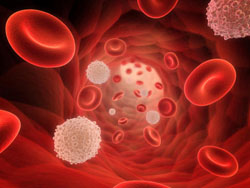
In the United States an increasing number of doctors are already using autologous stem cells in their practice. The stem cells are harvested from the adipose tissue (fat) or blood from bone marrow of the patient and then injected the same day into another part of the body. For instance many doctors inject joints like knees, hips and various parts of the spine. You can learn more about this or locate a physician at www.getprolo.com. The stem cells can also be injected intravenously into the cardiovascular system.
A Japanese researcher, Nobel laureate Shinya Yamanaka, collected genes from mature adult skin tissue and reprogrammed them to become pluripotent, which is a stem cell characteristic that means a cell is able to differentiate into multiple types of cells. This conversion process, referred to as induced pluripotent stem cells (iPSCs), means that we can take adult cells from a person with a particular disease, turn them into iPSCs, and then induce the iPSCs to turn into different types of body cells. Yamanaka?s iPSC findings show how scientists can essentially ?make any cell turn into any other type of cell and in effect move through wormholes in developmental time? to produce such things as a pancreas from skin tissue.? As a result, ?the petri dish becomes an avatar of the patient? whereby medicines can be identified “that will improve the condition of cells in the patient without having to take cells out of the petri dish and put them back in the patient.”
While harvesting “stem cells” from a patient’s blood from bone marrow or fat from liposuction has great value today neither of these procedures provides pluripotent stem cells needed for diverse tissue differentiation in a laboratory. Rather, these procedures produce mesenchymal cells, which work well for cardiovascular and orthopedic conditions because these tissues are the end organ targets for mesenchymal cells. However, they do not work well for other germ cell layer target organs, such as those produced from endoderm (incl., pancreas, liver, lungs) and ectoderm (incl., nervous system, skin).
Fortunately, there is a lesser known but more viable means for obtaining real pluripotent stem cells that merely involves a blood draw. In 2005, a study published in Minerva Biotechnologica identified stem cells in the blood. In other follow-up studies, scientists showed that such cells could, in fact, be used to regenerate not only heart tissue, but brain, lung, and pancreas as well.
In 2010, a clinical protocol was developed for harvesting, concentrating, reconstituting, and administering pluripotent stem cells obtained from autologous blood. Today the use of stem cells for clinical applications is in its infancy. Physicians still have much to learn about how to more effectively utilize pluripotent stem cells in their practice for the benefit of their patients. Such knowledge includes not only using the most appropriate source for harvesting real stem cells but in improving the means of attracting those stem cells to where they are needed and facilitating their differentiation. As more physicians implement the use of pluripotent stem cells in their practice, such as those obtained from autologous blood, we can begin accumulating the objective data needed to validate stem cells in the present and advance stem cell science into the future.





